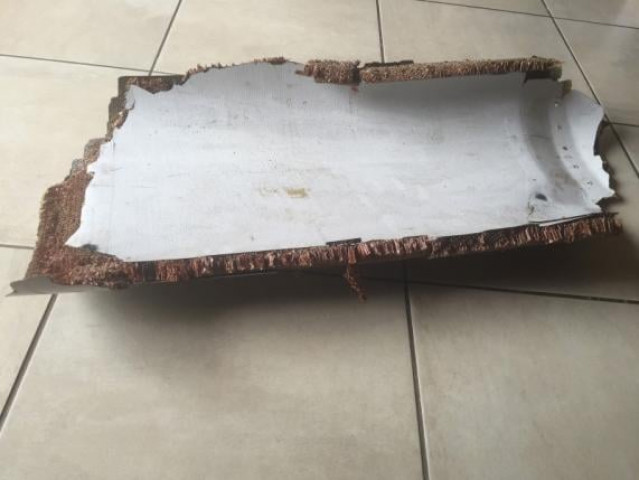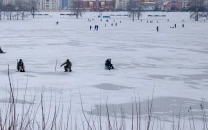MH370 was flown into water, says Canadian air crash expert
Official investigation team says it is investigating whether the plane was piloted in its final moments

A piece of debris found by a South African family off the Mozambique coast in December 2015, which authorities will examine to see if it is from missing Malaysia Airlines flight MH370, is pictured in this handout photo. PHOTO: REUTERS
Speaking at Australian news programme, 60 Minutes, Larry Vance said that erosion along the trailing edge of recovered wing parts indicates a controlled landing.
Two years since MH370: The mystery grows due to the limits of technology
Vance was formerly investigator-in-charge for the Canadian Aviation Safety Board and the Transportation Safety Board of Canada, and has led more than 200 air crash investigations. He told 60 Minutes that an absence of such wreckage was one factor suggesting MH370 landed in controlled circumstances.
"Somebody was flying the airplane at the end of its flight. Somebody was flying the airplane into the water. There is no other alternate theory that you can follow," he said. According to Vance, photographs of the recovered flaperon show a jagged edge, suggesting high-pressure water erosion that could only be caused if someone had been guiding the plane into the ocean.
"The force of the water is really the only thing that could make that jagged edge that we see. It wasn't broken off. If it was broken off, it would be a clean break. You couldn't even break that thing," he said. "You cannot get the flaperon to extend any other way than if somebody extended it. Somebody would have to select it," he added.
Families of missing MH370 passengers sue airline as deadline nears
Vance's theory is the latest to emerge on what has become one of aviation's greatest unsolved mysteries. The search for MH370 has been combing a 120,000sq km area of seabed using underwater drones and sonar equipment deployed from specialist ships. It is expected to draw to a close by the end of the year if it does not find credible new evidence.
 PHOTO: BBC
PHOTO: BBC Fragment of interior door panel found in Rodrigues Island, Mauritius in March 2016. PHOTO: ATSB
Fragment of interior door panel found in Rodrigues Island, Mauritius in March 2016. PHOTO: ATSBPeter Foley, the Australian Transport Safety Bureau's (ATSB) programme director of the search, told 60 Minutes that the type of damage the flaperon sustained provided evidence for the controlled landing theory. Foley was asked, "If there was a rogue pilot, isn't it possible that the plane was taken outside the parameters of the search area?"
MH370 families reject Malaysia’s conclusion on plane debris
He replied; "Yeah — if you guided the plane or indeed control-ditched the plane, it has an extended range, potentially. There is a possibility… somebody [was] in control at the end and we are actively looking for evidence to support that."
The official investigation team has said it is investigating whether the plane was piloted in its final moments.
This article originally appeared on BBC News.



















COMMENTS
Comments are moderated and generally will be posted if they are on-topic and not abusive.
For more information, please see our Comments FAQ